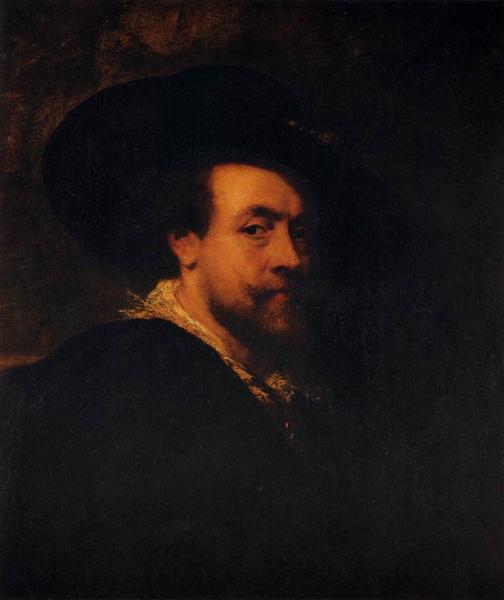描述
In the realm of Baroque art, Peter Paul Rubens stands out not only for his technical mastery, but also for his ability to capture the essence of humanity in his paintings. The "Self-Portrait" of 1625 is a manifestation of his mastery, where the artist presents himself with a speed and energy that translates into his distinctive painting style. The work is a reflection of his vibrant personality and his confidence as a painter, as well as an intimate exploration of his own identity.
The composition of the work is clear and forceful. Rubens uses a vertical format that emphasizes the figure of the self-portrait, with a dark background that highlights its features. This use of tonal contrasts is characteristic of his style, where light and shadow intertwine to give volume and depth. The artist portrays himself turning slightly to the left, suggesting a naturalness in the pose; his features are robust, with a serene expression that simultaneously evokes introspection and determination.
Colour in this work is fundamental to the creation of atmosphere. Rubens employs a rich, warm palette, with gold and terracotta hues in his flesh, contrasted by the darkness of the background, thus creating an almost three-dimensional effect. The shimmers in his beard and in the fabric of his clothing are characteristic of the high level of technical skill that the artist mastered, suggesting the quality of the materials without detracting from the expressiveness of the portrait. The texture of the clothing, which appears to be composed of a richly decorated brocade, not only reflects the social status of the artist at the time, but also adds a tactile quality that invites the viewer to appreciate the virtuosity of the brush.
An interesting aspect of this self-portrait is its place in the context of Rubens's oeuvre. During this period, the artist was at the height of his career, having achieved recognition both in his homeland of Flanders and throughout Europe. While he was enjoying success, the 1625 self-portrait can also be interpreted as a meditation on his own mortality and the legacy he would leave behind. By constructing himself on this canvas, Rubens provides posterity with an image of himself that is both personal and universal, becoming a symbol of the artistic genius of the Baroque.
Rubens was no stranger to the subject of self-portraiture. Throughout his career, he produced several of these, each reflecting different stages of his life and his evolution as a painter. However, in the “Self-Portrait” of 1625, there is an assurance and command that is perhaps not apparent in other previous works. Rubens’ depiction is powerful, a frontal approach that emphasizes his role not only as an artist, but also as an individual immersed in a world of reflection and creation.
This self-portrait is more than just a representation of himself; it is a manifesto of his style and vision. Rubens, with his exuberance and passionate approach to art, stands as a crucial figure in the history of painting, whose influence lives on in the masters who followed him. In this work, every brushstroke seems to contain an echo of his soul, making this self-portrait not just an exercise in technique, but a profound statement of identity that resonates through the centuries.
KUADROS ©, a famous painting on your wall.
Hand-made oil painting reproductions, with the quality of professional artists and the distinctive seal of KUADROS ©.
Painting reproduction service with satisfaction guarantee. If you are not completely satisfied with the replica of your painting, we will refund 100% of your money.

